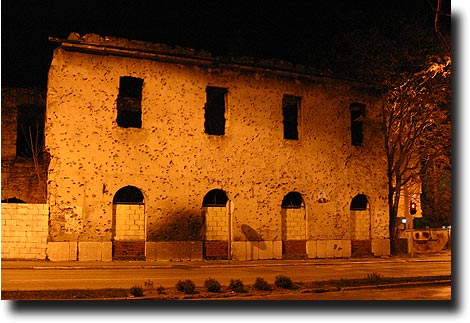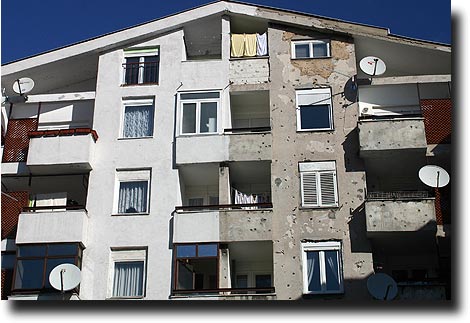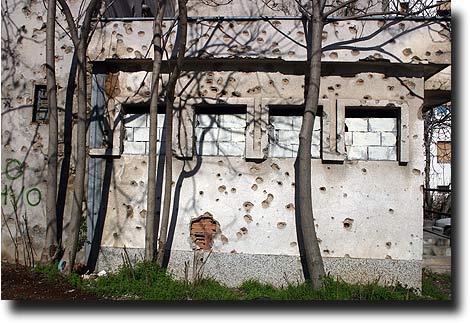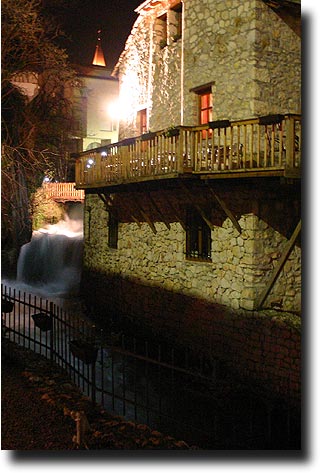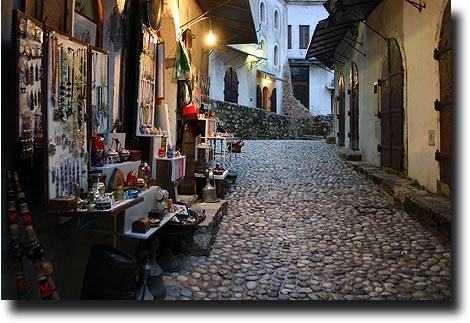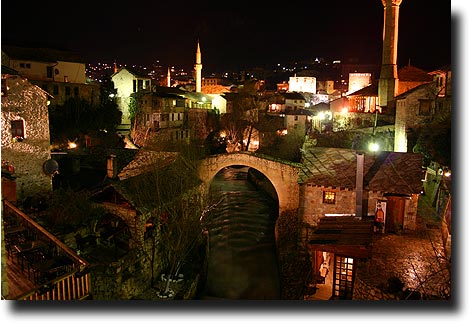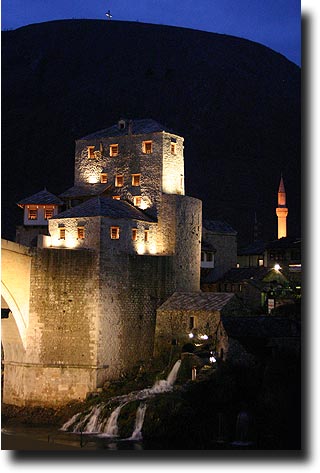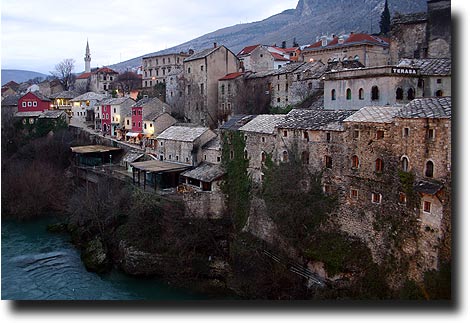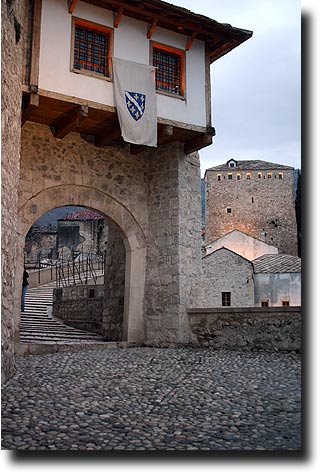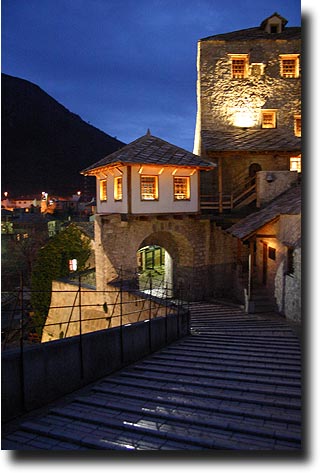![]()

The most beautiful town in one of the
saddest settings...

Mostar is a city that was long famed for its beauty, yet that beauty was scarred in the horrific bloodshed of the wars following the breakup of Yugoslavia. The city was the scene of intense fighting between Croatian Catholics and Bosnian Muslims, as national pride and religious fervor exploded.




